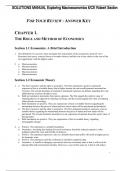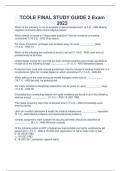Exam (elaborations)
Solutions Manual for Exploring Macroeconomics, 6th Canadian Edition by Robert Sexton. isbn: 9781774747803. Full Chapters.
- Course
- Institution
Solutions & Solutions Manual for Exploring Macroeconomics, 6th Canadian Edition by Robert Sexton, Colin Kovacs, Peter Fortura. Exploring Macroeconomics 6ce Sexton solutions. solutions manual 6ce sexton. #ExploringMacroeconomics , #Sexton 6ce
[Show more]




